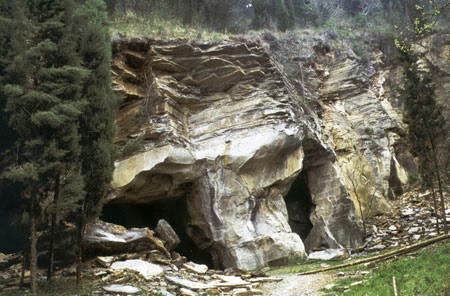This piece of work has been sat in my MA file for years. However the subject matter has recently become quite popular and if the gossip is anything to go by, it's shortly to get the Dan Brown treatment. So before this happens, I thought I'd get this essay into an abridged form (ha!) on here.
The
Grotto Grande, or Buontalenti's Grotto sits in a quiet corner of the
Pitti Palace/Boboli Gardens in Florence and has been subject to many interpretations. It is very much a patchwork reflecting the personalities of the three Grand Dukes under which is was built. The ostentatious façade (1556-1560) built for
Cosimo I began as Vasari's fish pond and decorated with
Bandinelli's Ceres and Apollo. It was the partnership of
Francesco I and
Bernardo Buontalenti who designed and constructed the façade’s second storey and the three unusually decorated chambers. The completion of the third chamber and the finishing touches were provided by
Ferdinand I (1587-92) after the death of his brother, Francesco.
The surface of the upper storey has been covered with material from nature. Stalactites soften the classical edges of the facade and there are mosaics of coloured shells and stones which picture the insignia of the various Medici dukes. Though they are now poor specimens and you have to really look for them, there are plants in terracotta pots behind the stalactite edges of the gable. There is an anonymous eighteenth century watercolour of the grotto showing large healthy plants; this was a considerable time after Buontalenti but there is no reason to doubt that this was his idea.


